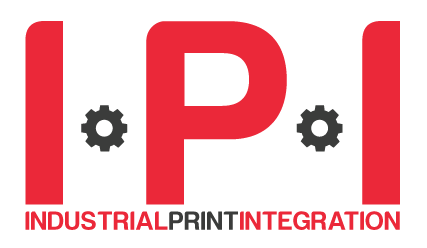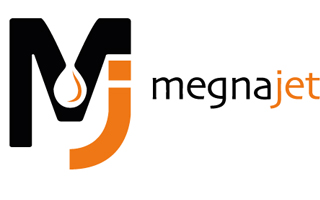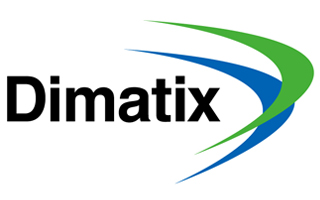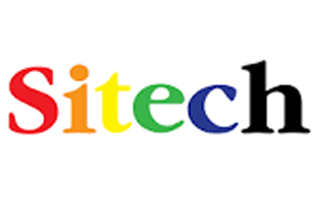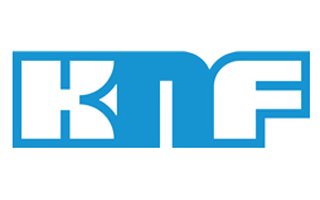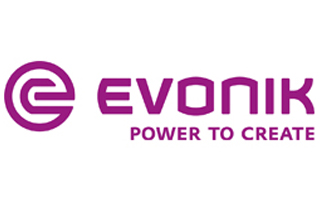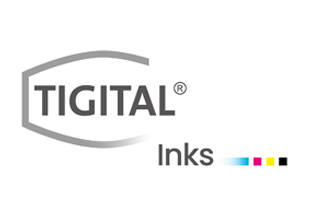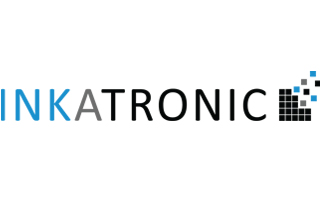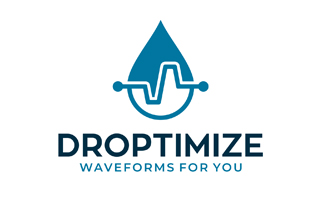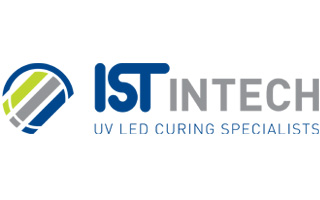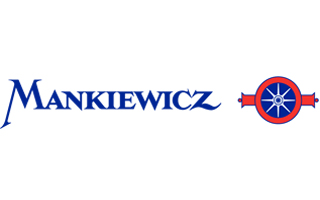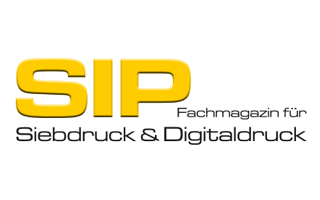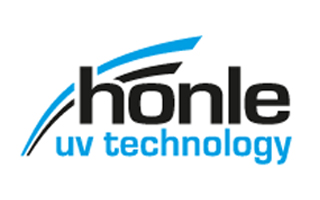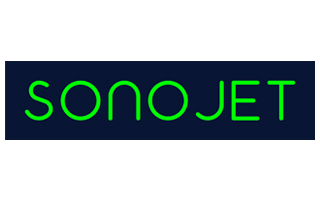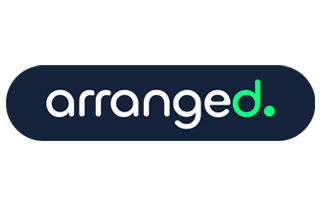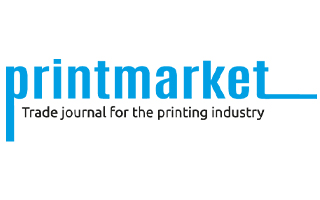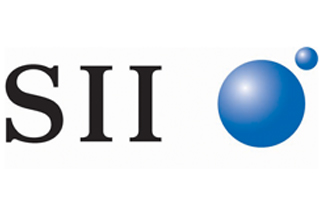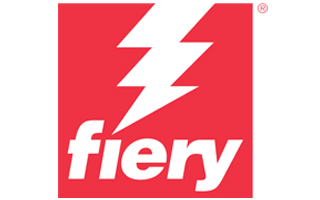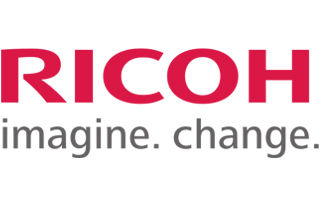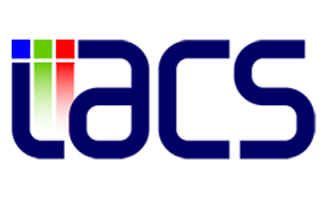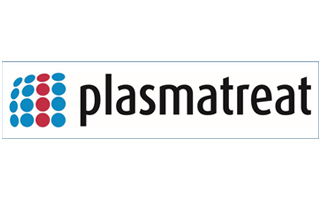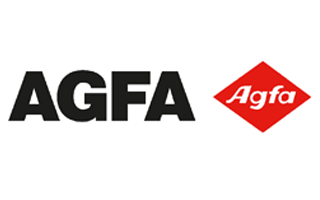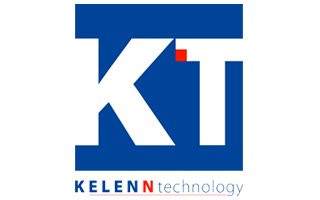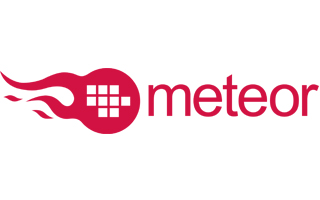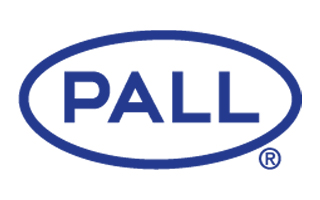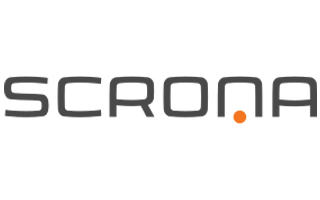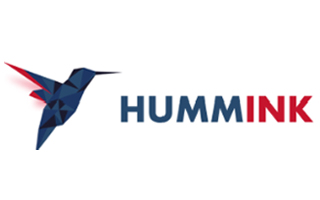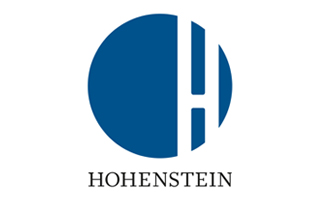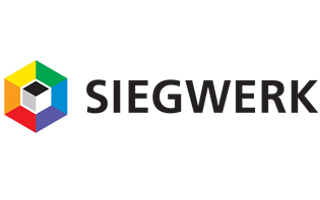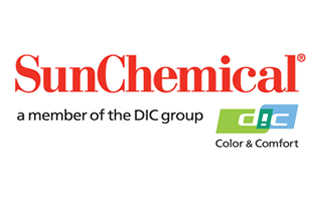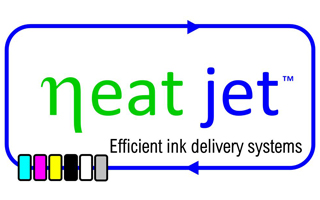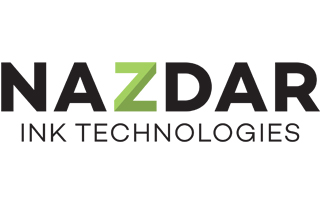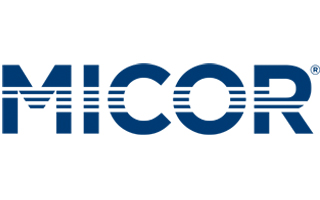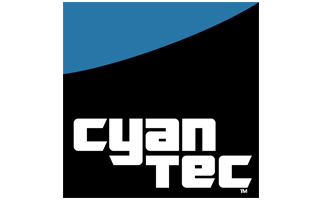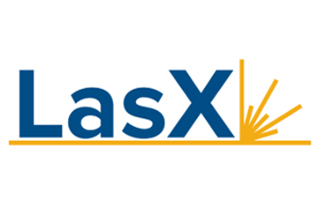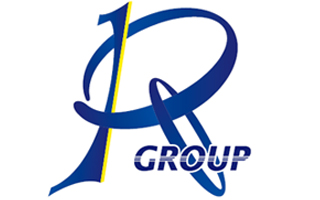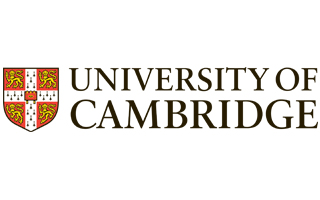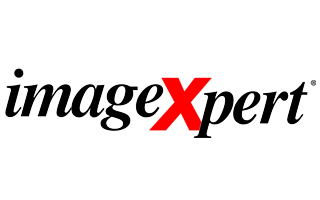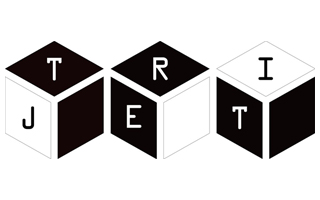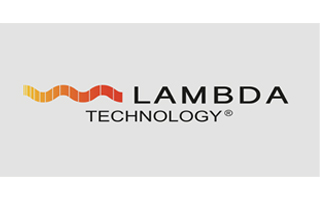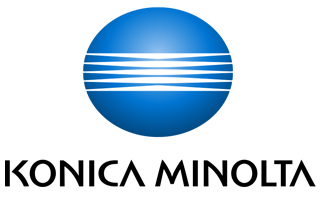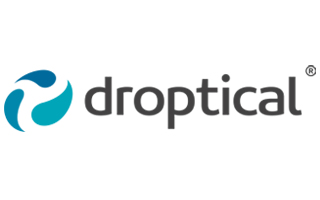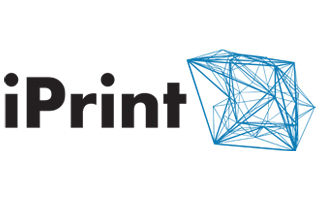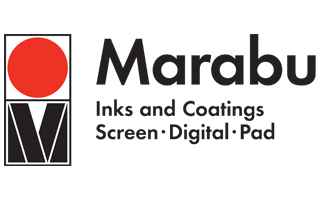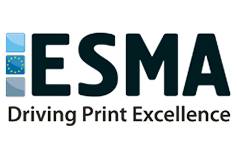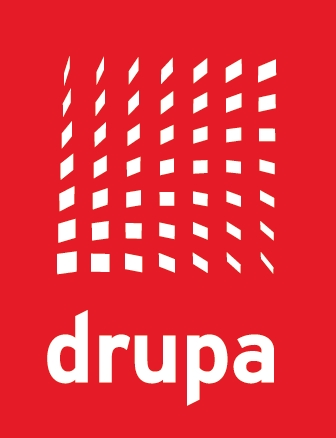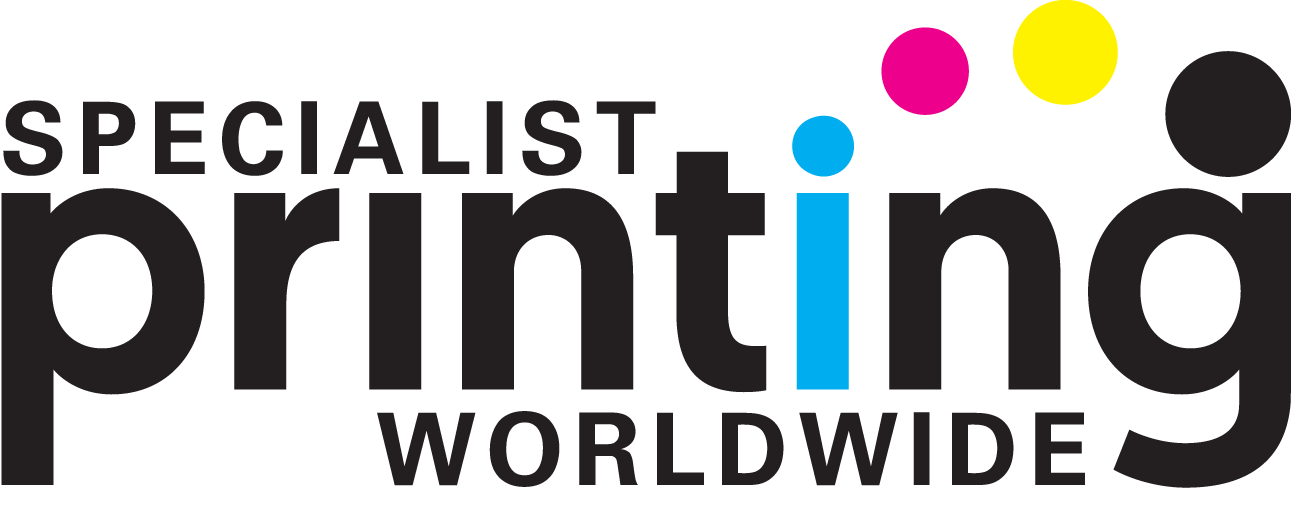2025 Programme
IPI 2025 will feature 59 technical presentations about the latest print technology for industrial applications. Major topic blocks include customised print systems, printhead design, ink and ink formulations, UV-LED curing and IR drying, big data management, AI, automation and sustainability.
Free Waveform Training for all IPI 2025 attendees: 11 November 2025 | 16:00–19:00. Kick off your IPI 2025 experience with a complimentary hands-on training session dedicated to waveform optimisation. This exclusive pre-conference event is open to all registered attendees and designed to give you practical insights into waveform development and its impact on inkjet printing. The training is now fully booked, select the “Waiting List” option in the delegate registration form and we’ll let you know as soon as a spot opens up. More details
08:30 | Registration and tabletop networking | ||
09:00 | Conference introduction | ESMA | |
09:25 | KEYNOTE: AI-POWERED ROBOTICS: MARKET AND TECHNOLOGY TRENDS The keynote gives insight into the latest trends in industrial and humanoid robots. Application examples of AI-powered robotics such as model-free grasping, cobot-welding or programming via imitation learning will be presented. Also the application potential of humanoid robots in production and logistics will be discussed. Finally, an outlook on the vision of automation of automation for high mix, low volume production will be given. By using digital tool chains and AI, the engineering effort of robot systems can be reduced by 50%. One example is Computer-Aided-Risk-Assessment (CARA), which supports engineering in making robot safe. | ||
09:50 | KEYNOTE: DEAD FRONTS, LIGHT GUIDES, HIDDEN-TIL-LIT DISPLAYS: HOW INKJET ENTERS HUMAN-MACHINE INTERFACES Functional and decorative products for global customers in the electronics, automotive and industrial sectors are one of the core areas of CCL Design, a leading manufacturer in this field. Innovative display effects such as dead fronts, light guides, and hidden-until-lit elements are becoming increasingly important in modern HMI (Human-Machine Interface) design. This presentation explores how inkjet printing technology is opening new doors in this field by enabling unprecedented design freedom, precision, and adaptability. Following an overview of HMI evolution and the rise of advanced optical effects, the session will delve into how inkjet printing supports complex visual features while meeting functional and industrial standards. The presentation will compare the strengths and limitations of inkjet versus screen printing in these contexts, emphasising where inkjet complements or outperforms conventional approaches. Real-world case studies from recent development projects will provide practical insights into how these technologies are implemented in real industry applications. As user expectations continue to grow, the fusion of digital printing and smart interface design is playing a pivotal role in shaping the next generation of interactive surfaces. | ||
10:15 | KEYNOTE: A NEW DIRECTION IN INKJET: WHY ARE CHEMICAL KINETICS ACCELERATED IN MICROSCALE DROPLETS? Inkjet printing has an exciting future because it is uniquely capable of delivering high quality images across ultra-low batch volumes while being scalable in terms of print dimensions and throughput. The technology has been applied to marking and coding individual products at incredible speeds, and more recently printing with ever higher precision, direct writing to existing 3D shapes, printing of a wide range of functions and devices, and even moving to delivering of high-quality paints and coatings. These developments have relied upon the first core feature of inkjet, that of depositing droplets through digital control at very well-defined positions. When looking at the future applications and inkjet research, it is worth remembering that inkjet sits within a broader family of droplet-creating production processes, such as gas atomisation, spray coating, spray drying, medical aerosols, fuel injection and many more. These can all create droplets of a similar size to inkjet but the main difference, beyond drop positioning, is that inkjet allows homogeneous, ubiquitous control over drop volume, velocity and in some cases even charge. This is the second core feature of inkjet. In the Fluids in Advanced Manufacturing research group, we have been thinking about this capability for droplet control and will present new applications where this may be the most important factor. Firstly, we will look at applications in understanding and controlling drug delivery through droplet volume control. Secondly, we will introduce a new and rapidly developing field, the tuning of chemical reaction kinetics through control of droplet properties alone. We will go through the state-of-the-art in this field and show how this may become an exciting new application for inkjet technologies. | ||
10:40 | Coffee break and tabletop networking | ||
11:20 | PERFORMANCE, PRODUCTIVITY, DURABILITY: BEHIND THE SLOGAN, AT THE CORE OF FUJIFILM DIMATIX’ INKJET TECHNOLOGY In this session we will unpack productivity to better understand what it means for OEMs who are looking to build a printing systems with sustainable high speed and predictable productivity. As inkjet solutions grow their reach into a myriad of industry segments, it is apparent that meeting end users needs for quality, predictable and consistent output is paramount. Our OEM partners are on an ongoing quest to meet their clients demands, while in a changing business world keeping costs at bay. With products available at almost any price point to meet the needs for end users OEM choose from inexpensive disposable printheads to printheads that may last as long as the expected life of their product. With both having their place in our served industries, FUJIFILM Dimatix had based its business on high end inkjet solutions known for their performance, durability and productivity. The essence of productivity goes deeper than just the spec such as resolution, jetting frequency and jet velocity, to include a range of technologies that are part of FUJIFILM Dimatix’ printhead technologies. | ||
11:45 | YOUR QUESTIONS – OUR INNOVATIONS: THE JOURNEY TO A NEW PRINTHEAD At the heart of every successful printing process is a printhead that keeps its promises: precision, consistency, and reliability. This showcases how our latest innovations in inkjet technology are directly inspired by customer questions and market demands. From robust nozzle design to optimized fluid handling and extended lifetime performance, every technical feature has been developed with real-world challenges in mind. The result is a printhead that not only meets expectations but sets new standards in operational stability and flexibility. By translating customer requirements into cutting-edge solutions, we ensure printheads that deliver higher productivity, reduced downtime, and the versatility to handle a wide range of applications. This journey from insight to innovation reflects our ongoing commitment to empowering customers with technology that supports growth, efficiency, and competitive advantage in the inkjet printing industry. | ||
12:10 | KONICA MINOLTA’S NEWLY DEVELOPED 600 DPI PRINTHEAD: TECHNICAL PERSPECTIVE AND APPLICATIONS Konica Minolta has thirty years’ experience in industrial inkjet business with compact and durable printhead products. Recently, the requirement of higher resolution and multi colour printheads are growing in the market and Konica Minolta developed a novel printhead based on our existing 600dpi printhead, KM1800iSHC to meet such demands. The new printhead has several new features with keeping the same electrical interface as KM1800iSHC. The new printhead is suitable for both in-scanning applications and single pass applications since it has dual colour channel capability and suitable native droplet volume for 600dpi. In addition, requirement of printing on non-flat surface for décor becomes popular for inkjet and long-throw distance capability of jetting the droplet is necessary. Konica Minolta has already developed long-throw distance technology with our existing printhead models and applied the technologies to the new products. In this presentation, technical features of the new printhead and its wide range of industrial applications are discussed. | ||
12:35 | RISO TECHNOLOGIES’ APPROACH TO ACHIEVING QUALITY HIGH-GAP PRINTING AND INTEGRATED PACKAGING WORKFLOW RISO Technologies provides drop-on-demand inkjet printhead solutions and has been successfully operating since July 2024, following the acquisition of Toshiba Tec's inkjet businesses. In this presentation, we will talk about RISO Technologies’ approach to producing quality high-gap printed results based on shear-mode inkjet technology. In particular, some of the technical considerations for printing scannable QR codes at high gap will be discussed. Furthermore, we will talk about the prospects of integrating our printing unit “Integlide” into packaging workflow, streamlining production processes, and facilitating supply chain management in the manufacturing/logistics industry. | ||
13:00 | Lunch break and tabletop networking | ||
14:30 | REVOLUTIONISING BATTERY MANUFACTURING WITH PRECISION INKJET TECHNOLOGY Discover how advanced inkjet printing is reshaping the future of battery production and addressing long-standing manufacturing bottlenecks. This high-precision, non-contact deposition technology enables controlled, repeatable placement of critical components – electrodes, separators, and ceramic insulating layers – with micrometre accuracy. Unlike traditional coating and calendaring methods, inkjet printing minimises material waste and enables digital design flexibility, paving the way for rapid prototyping and mass customisation. Recent advancements in printhead architecture, drop-on-demand performance, and ink formulation have significantly improved the viscosity range and particle loading achievable in functional inks. These innovations allow precise patterning of active materials such as lithium cobalt oxide (LCO), solid electrolytes, and separator – key enablers for both lithium-ion and all-solid-state batteries. By digitalising the conventional, highly skill-dependent coating process, we enable anyone to form precise and uniform films with the push of a button. This minimises material losses – which account for 80% of lithium-ion battery costs – while also contributing to reductions in energy consumption and CO₂ emissions. Designed for next-generation energy storage, inkjet-based manufacturing represents a transformative step toward cleaner, smarter, and more adaptable battery production. | ||
14:55 | 3D STRUCTURAL PRINTED ELECTRONICS: OVERCOMING SURFACE, MOTION AND DEPOSITION CHALLENGES The integration of functional electronics directly onto 3D parts, known as 3D structural printed electronics, is a rapidly developing field with applications in smart devices, automotive interiors, and medicine. This approach is more complex than traditional flat electronics, requiring a complete and interdisciplinary process chain. Success depends on the careful co-design of several key stages: materials, surfaces, motion, deposition, and characterization. This abstract outlines the main challenges in this process. These include preparing and modifying surfaces to ensure material adhesion and resolution, developing robotic deposition strategies with real-time path correction, and adapting deposition technologies for complex geometries. It also touches on formulating functional inks and pastes with a wide viscosity range to suit different shapes and substrates. Many of these challenges, such as precise material placement on complex paths and geometry-conformant toolpath generation, are highly relevant to inkjet technology. Ultimately, successful 3D printed electronics relies on integrating robotics, advanced materials, and process control into a single, responsive manufacturing foundation. This approach not only offers performance and manufacturability benefits but also shows great potential for reducing material waste and environmental impact compared to traditional electronics. | ||
15:20 | PRINTHEADS COMPARISON: HOW TO MATCH THE REQUIREMENTS? In this study, the printing process is adjusted for a specific ink to meet the requirements of our project partner and their specific application. Various printheads were assessed based on their technical data sheet and actual performance tests in our lab, including drop watching and printing. The effect of the ink drying at the nozzle, known as latency test, captured droplet behaviour after different idle times, recording missing drops and drop speed recovery. The printing of nozzle check pattern shows the status of all the nozzles of the printhead at once and enable to detect any jetting problems. Finally, the performed maintenance cycles record the recovery of the printhead and ink consumption during purging. The final table of comparison of the different printheads included all the necessary information for our partner to make an appropriate decision regarding implementation in the production process for their application. | ||
15:45 | Coffee break and tabletop networking | ||
16:25 | FUNCTIONAL INKJET FOR ULTRA-HIGH VISCOSITY MATERIALS: ADVANCING INDUSTRIAL PRODUCTION This presentation introduces a novel ultra-high viscosity material deposition system engineered for high-volume, industrial inkjet applications. We'll unveil the first functional demonstrator of the Quantica Print Engine, showcasing our approach to enabling inkjet for functional industrial production with the ability to reliably print ultra high-viscosity materials like adhesives, coatings, paints, and varnishes. We'll explore the first scalable applications, including the deposition of insulating adhesives and thermal transfer materials in e-motor and battery coatings applications and the architectural design and printhead technology enabling them. Attendees will gain insight into how this technology addresses current bottlenecks in industrial printing, specifically concerning screen printing and dispensing methods, offering a robust, scalable, and versatile solution poised to transform a wide array of manufacturing processes. | ||
16:50 | INKJET PRINTING OF SCREEN PRINTING MATERIALS: TECHNOLOGICAL AND PROCESS-RELATED CHALLENGES Screen and pad printing are well-established techniques for the industrial application of labelling and product embellishment. However, the automation potential of these techniques is limited, and the processes still require a high amount of manual labour. A reason for the persistence of these techniques against more modern and flexible technologies is their wide range of applicable materials. But as the variety of products expands and the lifetimes of product cycles get shorter, it is difficult to portray these needs through screen- and pad printing. One printing technique that offers a high level of individualisation and flexibility is inkjet-based digital printing. It is a solution that facilitates quick on-demand production, does not require a printing form, and is contactless. One disadvantage of inkjet printing is the strong limitation when it comes to jettable materials. The maximum viscosity for typical industrial piezo inkjet printheads is around 25 mPa∙s. Recently however, a novel printhead technology has been presented by Quantica GmbH, which is able to jet fluids with a viscosity of up to 250 mPa∙s. This opens the possibility to a whole new range of fluids that could potentially be processed via inkjet. The presentation outlines the process and technological challenges that come with transferring screen printing materials to inkjet printing. | ||
17:15 | EHD-ENABLED INKLOGIC PRINTHEADS FOR MULTINOZZLE PROCESSING OF INKS WITH THE VISCOSITY OF HONEY Electrohydrodynamic (EHD) printing has long been known as a potentially superior printing technology compared to conventional inkjet, due to the potential of achieving much greater printing resolutions and working without the rheology limitations of conventional printheads. Back in the 80s, EHD was explored for graphical applications by major players but has long since been abandoned. MEMS-based EHD printheads can eliminate the problems that kept the technology from maturing and offer an alternative to modern piezo-driven inkjet heads. The above-mentioned problems and the respective MEMS solutions will be discussed, and it will be elaborated how the resulting printheads can benefit various applications. A special focus will be on how to make the printheads compatible with inks having viscosity levels of 10 Pa·s and more, at no added heating. | ||
17:40 | HIGH VISCOSITY AND OTHER INK ADVENTURES IN INDUSTRIAL INKJET Industrial inkjet fluids come in many forms, including UV, solvent-based and aqueous, in order to meet the application needs. For DoDxAct, it is often at the limits of viscosity that we find ourselves investigating the possibilities with different piezo printhead technologies. Inspired by customer requirements, but based on our own independent laboratory investigations, we explore the challenges that arise when pushing at the two ends of the accepted working viscosity ranges. With examples from 1-70cP, we describe some of the methods used to characterise challenging fluid performance, and the compromises that might need to be considered to find a solution to making inkjet work with these varying chemistries. | ||
18:30-20:30 | Networking reception |
08:30-09:00 | Registration and tabletop networking | ||
11:20 | ADVANCED COLOUR MANAGEMENT SOLUTIONS FOR EVERY PRINT TECHNOLOGY Industrial print manufacturers face increasing pressure to deliver exceptional colour quality while accelerating development timelines. Whether developing print systems for textiles, packaging, ceramics, or emerging applications, manufacturers require flexible colour management architectures that can perform well with varying ink systems, substrates, and production requirements without compromising quality and colour accuracy. This presentation explores modern approaches to colour management system design for industrial applications. We will share insights on how print system manufacturers and software developers are leveraging component-based colour technologies to meet demanding market requirements. | ||
11:45 | COLOUR MEASUREMENT REIMAGINED: HOW ROBOTICS AND AI ENABLE AUTOMATED SPECTRAL QUALITY ASSURANCE IN DIGITAL INDUSTRIAL PRINTING In decor and packaging printing, consistent and precise colour reproduction is critical to product quality, brand integrity, and customer acceptance. This presentation introduces a new paradigm in spectral colour measurement by combining collaborative robotics with advanced automation — demonstrated through the Spectro Cobot qbV. The system enables fully automated, contactless colour measurements on large-format, structured, or sensitive substrates, removing manual intervention and minimising operator influence. Key advantages include repeatable precision, adaptive measurement workflows, and seamless data integration into digital production environments. Real-world application scenarios from decorative surface finishing and high-end packaging will illustrate how robotic colour measurement drives process reliability, waste reduction, and inline quality assurance. This talk is aimed at engineers and decision-makers seeking future-proof solutions for Industry 4.0-ready digital print production. | ||
12:10 | FROM SCREENING TO SUBSTRATE: MANAGING VARIABLES FOR OPTIMAL COLOUR OUTPUT Achieving consistent, high-quality results in industrial printing depends on effectively balancing multiple variables, including screening, color gamut, and substrate control. This session takes a deeper look at how screening directly influences image sharpness, tonal transitions, and ink laydown, and examines when expanded gamut printing provides measurable benefits in real-world production. Attendees will also explore how differences in substrates – such as texture, coating, and absorbency – impact colour accuracy and repeatability. Practical examples and implementation strategies will be shared to help better manage these factors, ensuring predictable, repeatable, and visually superior output across a wide range of materials and environments. | ||
12:35 | JET THROUGHPUT REDEFINED – WIDE, FAST AND EFFICIENT Direct printing on non-absorbing materials such as plastics and metals remains challenging due to low surface energy, often requiring solvent-based inks or primers for adequate adhesion and resistance. Atmospheric plasma treatment provides an environmentally sustainable alternative by cleaning, activating, and chemically modifying surfaces to improve wettability and bonding. System performance depends on production speed, substrate geometry, and material composition, requiring adaptable nozzles and control systems for inline or stand-alone use. Plasma Coating enabled surface functionalisation and thin-film deposition there where Atmospheric Plasma Treatment is not sufficient to create the desired conditions. Remaining challenges include maintaining activation during high-speed production and preventing recontamination before printing. Continued advances in plasma control, process integration, and nanocoating technologies are expected to broaden the range of printable materials and improve adhesion efficiency. We will demonstrate how plasma treatment can be integrated into a printing process to prevent surface recontamination between the plasma activation and printing stages.
| ||
13:00 | Lunch break and tabletop networking
| ||
14:30 | PARTICLE SIZING IN THE PRINTING INDUSTRY For manufacturing inks by milling or by using homogenizers it is important to monitor the size distribution of ink particles ideally online. As larger particles can clog an inkjet nozzle it is important to be able to detect these. Single Particle Optical Sampling (SPOS) is able to measure every single particle in the range 0.5-400 µm. Therefore, this technique is widely used for quality control of inks and also in order to characterize the respective filters in use for inks.
| ||
14:55 | PLASMA TREATMENT FOR PERFECT PRINTING Inkjet printing on polymers is often challenging, particularly on polyolefins such as PE and PP, due to their poor adhesion and wettability. Plasma treatment has become a valuable tool for improving adhesion through its cleaning properties and the chemical and physical changes it induces in polymer surfaces. The cleaning properties of plasma also help to improve adhesion to polymers. The development of plasma systems with wider treatment widths, coupled with the experience gained in using plasma systems for printing applications over the last 20 years, has led to useful solutions for digital (and conventional) printing. Find out which mechanisms play the most important roles in optimising plasma treatment for the best possible outcomes, and how to implement them in production. We will examine the wettability of polymers, the cleaning properties of plasma treatment and the mechanisms of adhesion improvement, as well as providing many examples and case studies of the successful implementation of plasma in the printing process. | ||
15:20 | INDUSTRIAL INKJET PRINTING: A FORCE FOR SUSTAINABLE DEVELOPMENT Industrial inkjet printing both drives and is driven by sustainable development. Across industries where inkjet has gained traction, this presentation provides evidence that it reduces overproduction, energy use, harmful chemicals, and waste. These environmental gains also deliver cost savings, making sustainability a strong indicator of long-term business success. When paired with workforce sustainability policies, inkjet companies can expect sustainable growth. With data from some of Meteor’s customers and the industries they serve, this presentation examines inkjet’s environmental impact in ceramics and textiles, labels and packaging, commercial print, additive manufacturing, and automation. It highlights how sustainability has been a key factor in inkjet’s adoption and looks at the broader environmental effects of our industry on other industries. | ||
15:45 | Coffee break and tabletop networking | ||
16:25 | THE STORY ABOUT UV MEASUREMENT UV processes have now become established in many manufacturing processes and the following applies to all applications: the quality of the coating after curing is crucial. To always guarantee the best results, the intermediate steps must also be monitored, and the UV station certainly plays a key role in this. In addition to monitoring the electrical connection values of the UV system, it opens the possibility of UV measurement, which monitors the amount of UV irradiation emitted. This presentation will highlight the advantages and disadvantages of UV measurement and introduce various measurement systems. | ||
16:50 | SUSTAINABLE PERFORMANCE OF PRINTING PROCESSES: NIR TECHNOLOGY - SOLUTIONS FOR FORWARD-LOOKING MANUFACTURING This presentation provides an overview of shortwave infrared (NIR) technology and its practical applications in the printing industry. We will explore the fundamental concepts of infrared radiation and examine how NIR drying offers an efficient alternative to traditional hot air-drying methods. Attendees will learn about the benefits of NIR technology, including faster ink drying, im-proved print quality, and potential cost savings. A recent case study will illustrate how integrating NIR systems can optimize production processes and reduce energy consumption. Additionally, we will discuss the environmental advantages of using NIR technology in conjunction with renewable energy sources, highlighting its role in reducing CO2 emissions and supporting sustainability efforts. This session aims to offer practical insights into enhancing printing efficiency and adopting greener practices. | ||
17:15 | FIVE FACTS ABOUT INFRARED DRYING Water-based inkjet applications are becoming ubiquitous in serval printed products but especially for the packaging industry. This presentation covers the understanding of heat transfer mechanisms, differences of infrared wavelengths and the relevance of moisture transport. Excelitas Noblelight will discuss how to develop and evaluate processes in drying, such as finding the optimal process window between emitting light sources, material absorption, and chemical composition. We provide our customers with the essential tools and solutions to create their own processes for achieving their goals. | ||
17:40 | FREECURE: INNOVATIVE UVC-BASED UV CURING FOR INDUSTRIAL PRINTING. REDUCING PHOTOINITIATORS WHILE ENHANCING CURING QUALITY AND ENERGY EFFICIENCY Evolving environmental regulations and raw material restrictions are challenging traditional UV curing systems that rely heavily on photoinitiators. The development of the FREEcure technology enables significantly reduced or no photoinitiators in formulations. By optimising plasma generation, reflector materials, and electronic control, the systems can deliver intense UVC radiation providing sufficient energy to initiate radical formation directly within the resin matrix. This approach reduces potential odour, migration, and formulation complexity while maintaining curing performance thus represents a promising direction for sustainable, high-performance manufacturing that meets both technical and regulatory demands in modern print and coating applications. In the presentation we will discuss the science behind this technology and the advantages in industrial print applications. | ||
18:30-20:30 | Networking reception |
08:30-09:00 | Registration and tabletop networking | ||
11:20 | HIGH PRECISION CAPILLARY PRINTING: A TECHNOLOGY FOR NEXT-GENERATION MANUFACTURING High Precision Capillary Printing (HPCaP) technology redefines printing at the micron scale by leveraging capillary forces and resonance, eliminating the need for external energy sources such as UV, lasers, or pressure. Inspired by Atomic Force Microscopy (AFM), HPCaP employs a glass micropipette attached to a macro-resonator oscillating at controlled frequencies. This mechanism enables precise material deposition with resolutions from 50 μm down to 100 nanometers, adapting seamlessly to substrate topography in real time. Unlike conventional inkjet printing, HPCaP relies solely on capillarity, allowing the deposition of a wide range of materials as well as high viscosity materials, including polymers, conductive inks, and biomaterials. Its ability to print high-aspect-ratio structures and fine interconnects makes it ideal for semiconductor packaging, display repair, biosensors, and even watchmaking. With its sub-micron accuracy, adaptability, and compatibility with numerous inks, HPCaP stands as a versatile and sustainable solution for next-generation manufacturing challenges. | ||
11:45 | EHD-JET PRINTING OF QUANTUM DOTS: INK FORMULATION AND PROCESS DEVELOPMENT FOR SUB-10 µM HIGH-RESOLUTION DISPLAYS The demand for ultra-high-resolution OLED, MicroLED, and QD-LED displays is driving innovation in precise and ultra-high resolution printing technologies. Electrohydrodynamic (EHD)-Jet printing is revolutionising high-resolution display manufacturing by enabling micron-scale additive patterning of nanomaterials such as Quantum Dots (QDs), which are not processable by state-of-the-art evaporation technologies. Unlike conventional inkjet printing, EHD-Jet leverages electrostatic forces to produce and precisely deposit picoliter-scale droplets (0.001-10 pL), facilitating superior pixel definition and display resolutions beyond 300 ppi, which is the current limit for inkjet-printed displays. This talk provides an overview of EHD-Jet technology and details Fraunhofer IAP’s advancements in QD ink formulation, including innovations at the cadmium-free InP/ZnSe/ZnS QD material level, for improved jetting stability, printing frequency and uniform film formation. QD-organic nanohybrids active layers are highlighted for their role in enhancing electroluminescent efficiency and even ambient-air processability. Furthermore, multi-nozzle printhead approaches are presented, which are critical for process upscaling and industrial throughput of high-resolution display panels with features below 10 µm and more. | ||
12:10 | SURFACE ACOUSTIC WAVE AEROSOL PRINTING FOR NANOMATERIAL DEPOSITION The integration of low-dimensional nanomaterials into functional microstructures remains a bottleneck for their application in electronics and photonics. Existing additive methods, such as inkjet and classical aerosol-jet printing, often compromise material integrity due to pressure, heat, or prolonged ultrasonic exposure – leading to particle aggregation, surfactant degradation, or nozzle clogging. Our approach to overcome these limitations is an aerosol generation directly within the print head using surface acoustic waves (SAWs) – a pulsed, pressure-free atomization under mild conditions, compatible with a wide range of solvents and surfactant systems. Our aerosol sources can effectively deposit 0D nanocrystals, 1D nanorods, and liquid-exfoliated 2D materials with high uniformity and preserved functional properties. This technique opens a scalable, nozzle-free route for printing fragile nanomaterials, bridging the gap between material design and device fabrication. | ||
12:35 | ADVANCEMENTS IN MULTI-MATERIAL INKJET PRINTING OF FUNCTIONAL MATERIALS FOR SUSTAINABLE ECOPCBS, MEDICAL DEVICES AND AIR QUALITY SENSORS Multi-material inkjet printing is a promising technology for the miniaturization of PCBs, offering high precision, design flexibility, and significant sustainability benefits. By enabling drop-on-demand deposition of functional materials, this additive process minimizes waste and reduces resource consumption compared to traditional manufacturing processes. The ability to combine multiple materials, such as conductors and dielectrics, in a single printing workflow opens new pathways for compact, integrated electronic systems. This study examines recent advancements in multi-material inkjet printing, highlighting its applications in the development of smart textiles, such as wearable belts for real-time vital sign monitoring in medical applications. The system features integrated sensors printed directly onto flexible substrates, offering both comfort and reliable performance for continuous patient monitoring. Research is also being conducted into the use of bio-derived and bio-degradable substrates to enable the fabrication of more sustainable "eco-PCBs." Furthermore, a fully inkjet-printed sensor system for air quality monitoring is under development. | ||
13:00 | Lunch break and tabletop networking
| ||
14:30 | INKJET PRINTING OF FUNCTIONAL PARTICLES VIA IN-AIR MICROFLUIDICS Controlled functional particles are urgently required in applications ranging from pharmaceutics, cell culture, energy storage, and capture and conversion of chemicals. Microfluidic chips enable fabrication of such particles with unparalleled precision. However, the throughput and tunability of microfluidic chips are limited by the presence of a surrounding liquid phase. Here we show that inkjet printing of droplets and manipulating these on-the-fly provides direct access to scalable fabrication of monodisperse emulsions, particles, and fibres with diameters of 20 to 300 μm at rates that are 10 to 100 times higher than chip-based droplet microfluidics. This method, named “in-air microfluidics”, also enables module-based production of three-dimensional (3D) multiscale (bio)materials in one step because droplets are partially solidified in-flight and can immediately be printed onto a substrate. Its in-line control, high throughput and resolution, and biocompatibility make in-air microfluidics a versatile platform technology for science, industry, and health care. | ||
14:55 | THE FUTURE OF DROPWATCHING: FROM MODULAR MACHINE INTEGRATION TO FULL-PRINTHEAD MONITORING A general rule across different fields of technical advancement is that miniaturization always provides great benefits. Often, the biggest technological potentials are only unlocked after components considerably shrink in size, despite the core technology already being well known. Inkjet printing has undergone a major transformation in recent years, high viscosity inks only being one of the new challenges. Thus, the demand to evaluate drop formations not only in the lab but also in the production machine is steadily increasing. This talk will show the recent developments in dropwatching and explain the potential it enables. Discover how to use dropwatching for seamless machine integration. See the tools to readjust parameters directly in the production line and explore upcoming new technologies like the usage of dropwatching for scalable, full-printhead inline monitoring. Learn to unleash the automated inspection potential of your inkjet application! | ||
15:20 | REPLACING TRADITIONAL MERCURY AND METAL HALIDE LAMPS WITH MULTI-WAVELENGTH UV LEDS Traditional mercury and metal halide lamps emit a broad spectrum, whereas UV LEDs are point light sources that emit a single wavelength. Currently, they are used only to replace lamps operating at limited photo-initiator wavelengths such as 365 nm and 395 nm. UVER has begun to overcome the limitations of single-wavelength UV LEDs by developing Multi-Wave technology to replace traditional lamps. Through this presentation, we would like to introduce our UV LED multi-wavelength curing technology. By utilising Multi-Wave UV LED technology, it is possible to expand the application of UV LED curing systems beyond UV inks, resins, and adhesives to a wide range of fields including coatings and varnishing. | ||
15:45 | Coffee break and tabletop networking | ||
16:25 | INKJET-ENHANCED R2P NANOIMPRINTING: SCALABLE PRECISION FOR NEXT-GEN AR WAVEGUIDES Morphotonics has integrated inkjet printing into its roll-to-plate (R2P) nanoimprint lithography platform to enable precise control over ink layer deposition. This innovation facilitates tuning of the residual layer thickness (RLT), a critical parameter in high-fidelity nanoimprinting. Especially in the fabrication of augmented reality (AR) waveguides, optimised RLT ensures superior optical performance. Inkjet technology offers spatially selective deposition, accommodating complex designs and variable pattern densities without compromising imprint quality. The synergy of inkjet and R2P nanoimprinting strengthens scalability and adaptability, positioning this solution as a key enabler for next-generation AR optics manufacturing. | ||
16:50 | HOW CAN INKJET PRINTING CONTRIBUTE TO PRECISION OPTICS? Inkjet printing advances precision optics by enabling high-accuracy deposition of functional inks onto substrates with nanoscale control. This additive manufacturing method allows precise tuning of optical properties, including layer thickness, refractive index, and patterning, facilitating customised anti-reflective coatings, spectral filters, and light-modulating surfaces. Unlike traditional vacuum-based techniques, inkjet printing reduces material waste, accelerates prototyping, and supports scalable production for both small components (e.g., lenses, sensors) and large-area optics (e.g., displays, solar panels). Its non-contact nature minimises contamination, ensuring high-performance optical devices. By optimising ink formulations and deposition parameters, manufacturers can achieve cost-effective, application-specific solutions for fields such as biomedical imaging, material sensing, and energy-efficient coatings. As a versatile and highly sustainable alternative, inkjet printing drives innovation in precision optics, offering enhanced design flexibility, rapid iteration, and compatibility with diverse substrates, paving the way for next-generation optical systems. | ||
17:15 | LASERSHARP MARKING: A NEW APPROACH TO HIGH SPEED, LARGE AREA ON-DEMAND SURFACE PATTERNING Laser Marking is used in a variety of applications in manufacturing of medical components, packaging and electronics, when clean and permanent information transfer or surface structuring is required. Conventional methods limit innovation and agility as they are restricted to small area processing. LasX’ recently developed 4th generation proprietary controller Proton λ defines high-speed on-the-fly laser processing new, using model-based laser process control and enables true order-of-one processing. LasX’s high-speed, high-resolution laser marking technology transforms production by reaching inline production rates, reducing WIP, streamlining fragmented processes through a seamless digital workflow, enabling instant job order changes and last stage customization. | ||
17:40 | GROW YOUR BUSINESS, NOT YOUR FOOTPRINT: ADVANCING PCB FABRICATION AND METAL STRUCTURING WITH FUNCTIONAL INKJET TECHNOLOGIES Additive manufacturing with inkjet printing is transforming PCB production and metal structuring applications. It simplifies the process by eliminating multiple steps – cutting the need for extra equipment, energy, and labour. It accelerates prototyping, adapts easily to design changes, and supports everything from custom jobs to high-volume runs. This smart, digital-first approach enables: fully additive 3D solder mask printing with excellent coverage, alignment, and functional thickness variation; one-step legend printing for component labelling and board serialisation; selective etch resist patterning on various metals – no photolithography required. The result: faster, leaner, and more sustainable electronics and metal structuring manufacturing that meets both regulatory demands and market needs for flexibility and customisation. | ||
18:30-20:30 | Networking reception |
09:00 | Tabletop networking | ||
09:25 | FROM LAB TO MARKET: ACCELERATING INNOVATION AND TECHNOLOGY TRANSFER Bringing a new technology to market is the biggest challenge for small and medium companies, tech-driven startups and academic spin-offs. While technological development often takes center stage, true success requires understanding the market, building a viable business model, and developing entrepreneurial and sales skills. In this talk, we share a proven approach and a real-world example of how we successfully turned a technology into a viable business. We will explore the five key success factors: technology maturity, business model and intellectual property (IP) strategy, sales and communication strategies, regulation and standardization, and financing. We will also highlight typical challenges and mistakes along the way – and show how to overcome them with clear steps and practical strategies. Our goal is to empower innovators to bring their solutions to market – faster, more cost-effectively, and with greater impact. This presentation offers practical insights for founders, aspiring spin-offs, and innovation professionals aiming to turn technology into real-world success – where science meets the market. | ||
09:50 | EMBRACE THE FUTURE OF INKJET INKS Digital printing has evolved during the past decade. Inkjet printing has entered numerous applications, and with this the different requirements have become very versatile. Therefore, enabling formulators with a comprehensive and versatile toolkit is of great importance. Different applications need different solutions for wetting, defoaming, dot sharpness, resistance, etc. With a very broad chemical and technological base and tailored solutions it is possible to ensure highest print performance by optimizing the ink properties as well as the ink receptive properties of the substrate. This presentation will address performant and sustainable additive and particle solutions to tackle these challenges showcasing enabling technologies to provide the basis for further innovation. | ||
10:15 | EU GREEN DEAL COMPLIANCE AND TESTING The EU Green Deal is the European Union’s plan to be climate-neutral by 2050, with a focus on achieving net-zero greenhouse gas emissions. It’s a wide-reaching initiative that shapes new policies and regulations for sustainability. The goal is to change how we think about growth and move to a circular economy. This means cutting down on waste and reducing the strain on natural resources. The Ecodesign for Sustainable Products Regulation (ESPR) requires companies to make products that are more sustainable, durable, and recyclable. Requirements include adopting innovative recycling techniques, reusing materials, and designing products that minimise environmental impact throughout their lifecycle. Brands and suppliers will also need to invest in new green technologies (e.g. digital printing). Aligning with the EU Green Deal can be challenging. With the right certification labels, you can stay ahead of evolving standards – whilst protecting your customers, brand, and future. We will explore how to manage regulatory changes with confidence – from chemical testing to claim verification. | ||
10:40 | Coffee break and tabletop networking | ||
11:20 | JET SET GO: ACCELERATING INNOVATION TO WIDEN THE PORTFOLIO OF FUTURE APPLICATIONS As industrial inkjet markets evolve, new materials and innovative developments are widening the potential application areas for inkjet. With digital print technology becoming of interest in more industrial applications there is also a need for wider compliance understanding and ensuring inks are compatible with industrial processes and finishes including receptiveness to primers, top coats and post print processes. In this talk we will cover some of the technology developments enabling this expansion, how compliance is influencing the direction and how ink and coatings are opening the doors to future applications. This includes UV inks for high durability outdoor applications, high flexibility UV inks and water-based inks for metal surfaces which all present challenges for current solutions. | ||
11:45 | THE FINESSE OF WATER-BASED INKJET CONSUMABLES FOR PACKAGING SUCCESS Water-based inkjet consumables are transforming packaging printing, yet many are unaware of their full potential. This session will explain why pigment-based WB inks deliver superior colour durability, chemical resistance, and adhesion compared to dye-based inks – ensuring eye-catching, long-lasting packaging. We’ll cover how primers and varnishes enhance print quality and protection, while also driving cost savings and production efficiency. Whether you work with folding cartons, corrugated boards, paper bags, or flexible paper packaging, discover how the right consumables unlock better performance, sustainability, and profitability for your business. | ||
12:10 | ON DEMAND CHEMISTRY TO CREATE A SUSTAINABLE VALUE CHAIN The packaging value chain spans from raw material sourcing to post-consumer disposal, influencing both environmental outcomes and economic benefits. Within this complex system, one critical area that is often over-looked is considering the fluids while beginning the development of a new printing system. This speech will explore how on-demand chemistry can revolutionize sustainability efforts throughout the value chain. By integrating fluid chemistry earlier in development, manufacturers can streamline testing, reduce waste, and improve operational efficiency. Attendees will gain insight into how innovations like high viscosity ink are driving value creation at every stage, from design and production to distribution and consumer use. The presentation will also highlight current challenges and propose forward-thinking solutions to transform fluid chemistry from a peripheral concern into a central driver of sustainable progress. | ||
12:35 | SCAP INK: A SELF-CURABLE, VOC-FREE AQUEOUS PIGMENT SYSTEM FOR ENERGY-EFFICIENT INDUSTRIAL PRINTING This presentation introduces SCAP (Self-Curable Aqueous Pigment) ink technology, a next-generation water-based pigment formulation designed to address longstanding challenges in industrial inkjet printing. SCAP ink features a two-stage self-curing mechanism: an initial water-removal-induced reaction that initiates adhesion, followed by a simultaneous secondary cross-linking reaction that imparts scratch resistance and long-term durability. Unlike conventional pigment inks, SCAP eliminates the need for substrate pretreatment, contains no volatile organic compounds (VOCs), and supports energy-efficient drying without sacrificing performance. The system is optimised for compact printing equipment and offers extended decap time, minimising maintenance in high-throughput environments. Demonstrations on diverse substrates – including coated/uncoated paper, textiles, and PET - highlight its versatility across applications in label, package, textile, and graphic printing. The quick-drying nature, inspired by printing industry demands, underscores SCAP’s potential to redefine sustainable inkjet printing for modern industrial workflows. | ||
13:00 | Lunch break and tabletop networking | ||
14:00 | INORGANICALLY PIGMENTED UV-CURABLE INKJET INKS FOR DEMANDING OUTDOOR APPLICATIONS UV-curable inkjet inks have very wide application spectrum in digital decoration of surfaces, spanning from sign and graphic applications till being crucial part of the industrial production processes of, for example, MDF flooring, substituting analogue printed décor paper by in-line, real time digital printing on décor paper with customized UV inks or direct digital printing onto panels. At the stage of considering a suitable UV-curable inkjet ink solution for implementation into production process, one should ask the question of the right ink pigmentation, whether organic pigments are good enough or for outmost UV-light and weathering resistance one would need an alternative? For the demanding outdoor applications, where long-term light fastness and weathering resistance are the must, TIGER Coatings has successfully found the alternative – inorganically pigmented UV-curable inkjet inks for direct to substrate printing on coil, metal sheets, aluminium and PVC profiles for outdoor applications. | ||
14:25 | THE CHALLENGES OF INKJET PRINTING IN ADDITIVE MANUFACTURING Inkjet printing in general has many challenges as a printing technique: limited viscosity range and preferably Newtonian behaviour of the inks, nano-particle dispersions due to the small nozzle sizes, decision to make on a single pass or multiple pass printing process, how to handle colour management to achieve the highest colour gamut, etc. All those in the inkjet business recognise these questions. However, ChemStream will go a step further and will take you into the world of 3D inkjet printing or “Material Jetting”. We will introduce you to the various additional challenges that crop up when you want to use inkjet for Additive Manufacturing purposes. Think of physical properties, optical properties, for mono-or multi-material objects. How does one build an object, layer by layer? How does one then ensure shape and strength are maintained? How does one achieve the desired colour in a 3D object? And finally, how does Material Jetting relate to other existing 3D printing techniques? Does it have a future among those? | ||
14:50 | BIO-BASED UV-INKJET INKS The European Center for Dispersion Technologies (EZD), a practice-oriented research institution within the SKZ Group, is dedicated to the development of dispersions, including those used in inkjet printing. The EZD team tackles complex challenges in formulation, stabilization, production and characterization of high-performance dispersions. One of the centre’s recent focal points is the development of bio-based UV-curable inkjet inks, which marks a significant step towards more sustainable printing solutions. This presentation explores the use of innovative formulations that incorporate renewable raw materials such as bio-based monomers, photo-initiators, additives and pigments. The goal is to create inks that reduce environmental impact while meeting demanding technical requirements, such as fast curing, excellent print quality, strong adhesion and compatibility with a wide range of substrates. The results demonstrate that bio-based UV-Inkjet inks can offer a viable and eco-friendly alternative to conventional systems, supporting the transition to greener manufacturing practices in the digital printing industry. | ||
15:15 | KEYNOTE AND WRAP-UP: THE FUTURE OF FUNCTIONAL AND INDUSTRIAL PRINTING The printing industry is diversifying beyond printing on paper, with specialised printing processes creating components or apply materials with functional properties in applications such as electronics, packaging, textiles and décor. This presentation will provide an expert overview of the main market trends and identify opportunities and threats for the printing industry over the next five years. The presentation uses data and insights from the Smithers report "The Future of Industrial and Decorative Printing to 2029". |
09:00 | Tabletop networking | ||
09:25 | THE RISE OF THE ROBOTS Cyan Tec first started building robotic inkjet print systems over fifteen years ago. Initially these systems were bespoke engineered, designed and built for specific niche applications. They would take months to design and weeks to commission and program. But now things are changing. With design modularisation, automated workflows and offline semi-automated programming, Cyan Tec’s robot printers are often now being commissioned and programmed in days. This is allowing the company to standardise its robotic inkjet systems and produce them in volume. This presentation shares some insights into robot print systems, their strengths and limitations, their current and potential applications. It will be shown how Cyan Tec’s approach is pushing this technology into the mainstream. | ||
09:50 | SHAPING THE FUTURE OF ADVANCED MANUFACTURING: WHERE INKJET AND LASER MEET Combining additive inkjet printing with subtractive laser processing enables powerful hybrid workflows for advanced manufacturing. This presentation explores how these complementary technologies support precision surface treatment, post-print modification of conductive inks, micro- and nano-scale structuring, localized polymer curing, and two-photon polymerization (2PP). By uniting the flexibility of digital inkjet deposition with the selectivity of laser processing, entirely new application fields are emerging. Examples include functionalizing metal surfaces for improved adhesion, reshaping and repairing printed electronic circuits, engraving microchannels and filling them with functional fluids for lab-on-chip devices, and fabricating micro-optical or biomedical components through polymer curing and 2PP. These hybrid processes also open pathways to sustainable production, as material use and energy input can be minimized through precise, localized treatment. Accurate placement of inkjet droplets together with focused laser light is more than a technical combination – it is a versatile manufacturing strategy that creates opportunities for highly precise, efficient, and next-generation digital production. | ||
10:15 | INK SUPPLY SYSTEMS FOR INDUSTRIAL INKJET PRINTING: CHALLENGES AND INNOVATIONS Ink supply systems play a central role in industrial inkjet printing, directly influencing jetting stability, print quality, and system reliability. Increasingly diverse applications place high demands on these subsystems: support for high-viscosity and particle-loaded inks, precise pressure regulation across different printhead types, and stable operation, even under dynamic motion in Direct-to-Shape printing applications. At the same time, production lines demand higher uptime and closer integration with supervisory control systems to improve maintenance and optimise production planning. This presentation will discuss Polytype’s approaches in system design, sensor integration, and PLC-based real-time control to meet these challenges. Closed-loop pressure regulation enhances stability under varying printing conditions, while integrated fault-detection mechanisms increase operational safety and reduce unplanned downtime. Nozzle-sensing technology enables the detection of pressure fluctuations, viscosity changes, or air intake events, and adaptive control strategies help to counteract them. Future developments such as predictive maintenance and self-optimising control loops will be outlined as key enablers for improved process stability and long-term reliability in demanding industrial production environments. | ||
10:40 | Coffee break and tabletop networking | ||
11:20 | INK DELIVERY SYSTEMS: TIME FOR CHANGE The physical characteristics of the latest Neatjet ink delivery system which is being launched at IPI will be presented. This new system is a compact ink recirculation type system of a novel design allowing fully automated control in either a production or lab environment. Design parameters and control parameters of the system will both be discussed. Using demonstrations not shown previously, operating windows and timings in particular will be explained and compared with previous systems presented by Neatjet. | ||
11:45 | FROM ADVANCED INK RHEOLOGY TO RELIABLE JETTING AND WAVEFORM PREDICTIONS Reliable inkjet printing relies on mastering the interplay between ink formulation, rheology, and waveform design. This presentation highlights recent advances in ink characterisation using the TriPAV high-frequency rheometer, which delivers a distinctive complex rheology fingerprint capturing viscoelastic and extensional properties essential for jetting performance. These fingerprints link directly to printability, enabling precise quantification of formulation changes and guiding fine-tuning for optimal results. In addition, the TriPAV printhead mode reproduces realistic jetting conditions, offering predictive insights into waveform optimisation and drop stability. By combining advanced rheological characterisation with waveform prediction, this integrated approach closes the gap between material design and reliable jetting. Case studies will illustrate how ink formulations can be systematically adjusted to achieve consistent performance across coatings, functional fluids, and emerging inkjet applications. | ||
12:10 | THE FUTURE OF INDUSTRIAL INKJET: ADAPTABLE SOLUTIONS FOR ADVANCED PRINTING Based on a range of application notes, individual industrial print application cases are presented, highlighting the critical factors for successfully implementing Inkjet technology. The presentation focuses on how modular inkjet tools are instrumental in the evaluation, development, and establishment of innovative processes. These tools provide a flexible and adaptable framework, enabling users to experiment with various parameters and configurations, thereby accelerating the path from concept to production. By examining real-world scenarios, the presentation underscores the versatility of inkjet technology across diverse industries such as automotive, coatings for NIL and batteries, adhesives, and thin film applications, where the significant role of modular equipment is fostering its adoption and refinement. This approach facilitates a deeper understanding of the challenges and opportunities in industrial inkjet, offering practical insights into optimising workflows and achieving superior results. The modularity ensures future-proofing and scalability, allowing for seamless integration of new advancements and continuous process improvement. | ||
12:35 | FROM LAB TO LINE: NEW OPTIMIZATION TOOLS FOR BRIDGING THE GAP Waveform optimization is essential for achieving high performance in industrial inkjet printing. But how can we ensure that lab-based tuning translates effectively to production environments? This presentation introduces some of the latest additions to our optimization toolkit, including the Nozzle Navigator, which enables precise measurement of jetting performance across the entire printhead, and the Mist Counter, which provides a quantitative comparison of waveforms with respect to misting. These tools are part of a broader suite of innovations aimed at improving the reliability, reproducibility, and performance of waveform development. Through real-world case studies – including long-distance jetting and high-speed printing – we will demonstrate how these advancements enhance our data-driven approach and support robust production outcomes. | ||
13:00 | Lunch break and tabletop networking | ||
14:00 | OEM PERSPECTIVE: INKJET PRINTING FOR SOLDER MASKS AND FLEXIBLE PCBS: DEVELOPMENT AND APPLICATION In today’s economy, companies are balancing the goals of making a profit, producing the highest quality to serve customers' needs, embracing digital transformation, and being sustainable. Those demands have led to a rethink of some steps in production and machinery. Let’s talk about one step to that goal: additive manufacturing with selective inkjet printing. By applying a unique printing strategy that utilises multiple printing stages to ensure clear, non-bleeding lines and fully covered edges, we can print etch and plating resists, solder masks, direct metal ink, and legends in different colours on various materials. Applications can include metal milling, secondary masking, etching, punching, or nameplate production, applying plating resists (such as silver masking), and many more. Especially in applications for solder resist and flex or rigid-flex applications, the selective process can be essential, covering edges without, e.g. tenting effects. Furthermore, ink shows better effects in high-frequency applications. | ||
14:25 | OEM PERSPECTIVE: ROLL TO ROLL BATTERY PRODUCTION: INNOVATIONS IN MATERIALS AND PRINT TECHNOLOGY Printed batteries are emerging as a promising solution for flexible, lightweight, and environmentally friendly energy storage. This presentation focuses on the roll-to-roll printing processes used to manufacture battery components, with particular attention to the technical challenges of printing on ultra-thin copper foil substrates. Topics include ink rheology, layer thickness control, web tension management, and registration accuracy—each critical for achieving consistent, high-performance results. We will discuss how conventional printing technologies are being adapted to meet the specific demands of battery fabrication, including the integration of functional materials such as electrode and electrolyte pastes. Drawing on collaborative work with Fraunhofer IFAM, we will present process insights and practical considerations for scaling from laboratory setups to industrial production. The goal is to share knowledge that supports the broader adoption of printed energy storage technologies within the printing industry. | ||
14:50 | OEM PERSPECTIVE: A UNIVERSAL INKJET PLATFORM FOR NEXT-GENERATION INDUSTRIAL PRINTING Industrial inkjet printing is transforming the way industries approach digital production, enabling unprecedented flexibility, precision, and customization. To fully leverage this potential, manufacturers need process development tools that are as versatile as the applications they serve. A universal, all-in-one inkjet platform delivers exactly that: compatibility with all major printheads, support for single-pass, multi-pass, haptics, and 3D printing modes, and integrated drop watching for real-time quality assurance. An intuitive, inductive interface ensures effortless operation – making advanced inkjet processes accessible to both experts and new users. Designed for industrial-scale workflows, the system seamlessly integrates with key pre- and post-treatment technologies, including UV curing, NIR drying, plasma, and corona treatment. Its ability to process virtually any ink – UV-curable, solvent-based, water-based, oil-based, conductive, or high-viscosity – makes it a true all-rounder across packaging, electronics, décor, and additive manufacturing. This combination of flexibility, reliability, and future-proof design establishes the platform as a game-changing tool, driving the next generation of industrial inkjet innovation. |
09:00 | Tabletop networking | ||
09:25 | HYBRID FABRICATION WITH INKJET AND LASER: UNLOCKING NEW SENSOR POSSIBILITIES Achieving high-precision inkjet printing is hindered by challenges such as the coffee ring effect and Rayleigh instabilities that lead to artefacts such as inhomogeneous coatings and line bulging. This is particularly problematic on hydrophobic substrates important for industrial applications. Conventional surface treatments like plasma or corona enhance wettability but often exacerbate these issues by promoting uncontrolled droplet spreading, compromising pattern uniformity and resolution. This presentation introduces a hybrid approach combining inkjet printing with laser treatment to overcome these limitations. By tuning laser parameters, we can harness capillary action to guide droplet placement, mitigating the coffee ring effect and ensuring uniform ink distribution. Single laser channels further constrain droplets to prevent line bulging and clumping, enabling sharp, high-resolution features. Demonstrated on thin-film temperature sensors, this method improves print quality across diverse substrates and applications. Offering a scalable, precise, and sustainable solution, this hybrid strategy addresses universal inkjet challenges, paving the way for advanced industrial printing processes. | ||
09:50 | WHAT IS NEXT-GENERATION INKJET TECHNOLOGY At iPrint, the world's largest inkjet research institute, we collaborate with nearly all inkjet printhead manufacturers to research and develop various new inkjet applications. We are also advancing the development of inkjet technology itself, including inkjet printhead technologies. In inkjet printheads, innovation is advancing not only in enabling high-viscosity jetting but also in solving longstanding challenges like jetting quality, stability, reliability, and durability. For printers as well, alongside those improvements driven by advancements in inkjet printheads and control systems for the printheads, the smart evolution of systems – incorporating big data, AI, machine learning, and more – is also progressing. In this context, in my presentation I would like to share some insights on what next-generation inkjet technology will look like, covering both the technology itself and its applications. | ||
10:40 | Coffee break and tabletop networking |
IPI 2025 SUPPORTERS
Contact
Kraasbeekstraat 3
B-3390 Tielt-Winge, Belgium
info@esma.com
T + 32 (0)16 894 353
